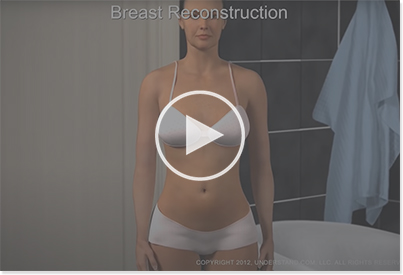Implant Reconstruction
Implants are available as a surgical option when patients have sufficient tissue on the chest wall to cover an implant.
Implants may be placed immediately after mastectomy, with placement above or under the pectoral muscle.
Recovery is often faster when the implant is placed above the muscle. Secondary procedures may be needed to reduce any resulting wrinkling or rippling.
For procedures under the muscle, it is common for the surgeon to place drains at the surgical site. They are typically removed 48 hours to two weeks following the surgery.
For delayed reconstruction, the surgeon will implant a tissue expander at the time of mastectomy. This allows for the tissue to be expanded, or stretched, over a period of time before the prosthesis is placed. The length of time from expansion to placement varies by patient.
Flap Reconstruction
When there isn’t sufficient tissue on the chest wall, or when the patient does not desire to have an implant, the physician will recommend a flap, or autologous, reconstruction. Abdominal skin and fat from the patient’s own body are most commonly used to reconstruct the breast shape, but tissue can be used from nearly any part of the body.
- TRAM flap (myocutaneous flap) – uses fat and skin from the lower abdomen, using the underlying rectus ("6-pack") muscle as a blood supply.
- DIEP flap (perforator flap) – uses the same fat and skin from the lower abdomen, but preserves the rectus muscle for lower risk of abdominal weakness or hernias.
Autologous reconstruction is more involved, and therefore generally requires a 2-3 day hospital stay.
Breast Conservation
The plastic and reconstructive surgical team performs oncoplastic techniques of tissue rearrangement for patients undergoing a lumpectomy. The focus is on preserving the breast tissue and reconfiguring the shape and position—which may include reduction, lifting and/or tightening for a symmetrical result.
